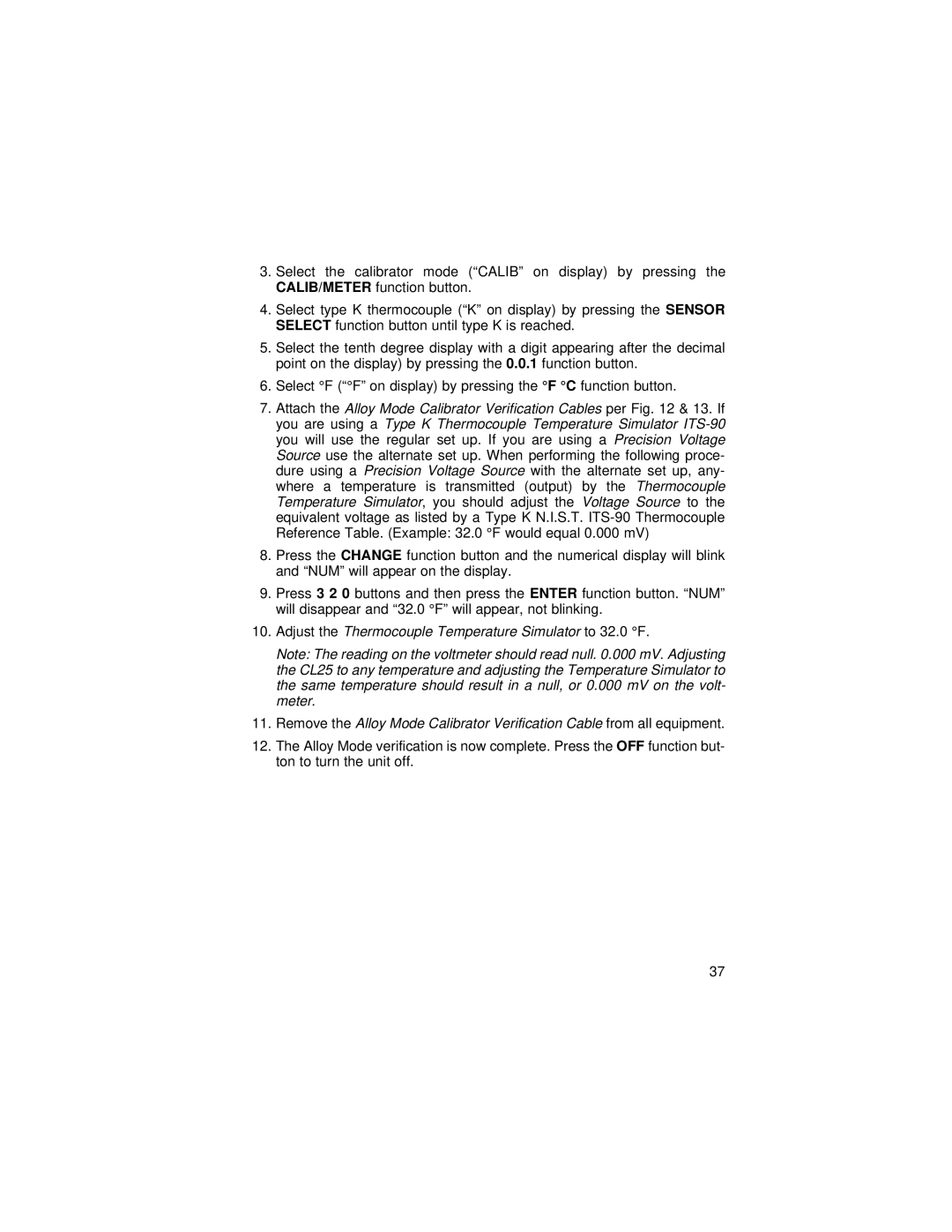3.Select the calibrator mode (“CALIB” on display) by pressing the CALIB/METER function button.
4.Select type K thermocouple (“K” on display) by pressing theSENSOR SELECT function button until type K is reached.
5.Select the tenth degree display with a digit appearing after the decimal point on the display) by pressing the 0.0.1 function button.
6.Select °F (“°F” on display) by pressing the°F °C function button.
7.Attach the Alloy Mode Calibrator Verification Cables per Fig. 12 & 13. If you are using a Type K Thermocouple Temperature Simulator
8.Press the CHANGE function button and the numerical display will blink and “NUM” will appear on the display.
9.Press 3 2 0 buttons and then press the ENTER function button. “NUM” will disappear and “32.0 °F” will appear, not blinking.
10.Adjust the Thermocouple Temperature Simulator to 32.0 °F.
00.Note: The reading on the voltmeter should read null. 0.000 mV. Adjusting the CL25 to any temperature and adjusting the Temperature Simulator to the same temperature should result in a null, or 0.000 mV on the volt- meter.
11.Remove the Alloy Mode Calibrator Verification Cable from all equipment.
12.The Alloy Mode verification is now complete. Press the OFF function but- ton to turn the unit off.
37
